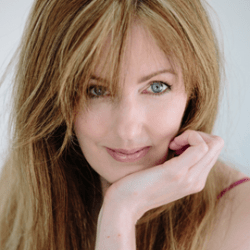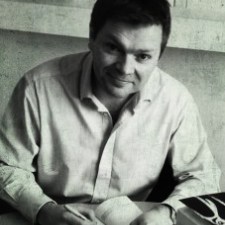Why are so many murders committed at night?
Psychologist and teacher, Vicky Newham, asks whether it’s coincidence, practical or symbolic - and considers the role of psychology.
Whether you’re watching Shakespeare at the Globe, enjoying Sherlock Holmes on the telly or reading a Val McDermid novel, you’ll have noticed that many murderers commit their vile deeds after dark. In real life, it’s similar. Have you ever wondered why this is?
An obvious reason is the desire to use the ‘cover of darkness’ to escape capture. Before electric lights were common in streets and homes, the dark was a useful enabler of violence. However, while practical considerations are unquestionably involved in all murders, they aren’t the whole story. Did you know that our night-time brains differ from our daytime ones? This may be why violence emerges at night. Studies of biological rhythms show that cells in the body and brain work on a twenty-four-hour clock. Cognitive function is optimal in the daytime and alertness signals peak in the brain between 6-8pm. As light decreases, the pineal gland releases melatonin, which promotes sleep, and our body temperature and metabolic rate drop too. At night, parts of the brain which control attention (chiefly, the pre-frontal cortex) don’t operate so well. This means that impulse regulation is reduced, and aggression and violence can therefore be more likely.
When our body-clock is disturbed, it’s called ‘circadian rhythm disruption’ and it can have a number of negative consequences. This can occur when we work night shifts, if we are ‘night owls’, when we take drugs and when we fly through time zones. Night owls can be more prone to depression. Many people report feeling more emotional at night, or ‘wired’, and some find that loneliness and rumination are worse then.
We also know from studies in psychology that parts of the brain which are involved with memory retrieval connect differently at night. This is when memory consolidation occurs and when the brain sorts and discards data which isn’t useful. Neuropsychological studies have shown that neurotransmitter levels (chemicals in the brain) fall during the day, and are conserved and replenished at night. Many of these chemicals play a role in attention and alertness. For those who are frustrated and alienated, those contemplating murder or those with violence in what psychologists call their ‘behavioural repertoire’, the evenings are often challenging. If you combine the reduced impulse control, the increased rumination and emotionality that can also occur in the evenings, with the protection that darkness gives, you can see why murder often occurs at night. In addition, the hours between dusk and dawn can seem interminable, especially in winter. If a person is unhappy and lonely, they can feel like they stretch on forever.
Criminology provides another insight into why violence can occur at night. Sadly, victims of crime are often society’s ‘invisibles’, who are seen as easy targets. These are often people who are part of night-time economies, such as sex workers, night-shifters, and bar and club staff and customers. They’re also the homeless and rough-sleepers. Alcohol tends to exacerbate problems as it’s a known behavioural disinhibitor, and is often linked with aggression and violence. Furthermore, many night-time businesses involve alcohol, and rough sleepers often self-medicate with it. Where there are crowds and large groups, for example, night clubs, stadium events and gigs, behavioural constraints are weakened in what psychology refers to as ‘deindividuation’. Put simply, in groups people stop acting as individuals and are driven by contagious group dynamics. Testosterone, frustration, temperature and noise are also linked with aggression and violence.
A couple of hobbies can have links with violence, although they don’t exclusively take place in the evening. Watching media violence can result in learning what’s been observed, and then imitating it. ‘What you see is what you do’. Playing violent media games can have an even stronger priming effect. Effects can, however, be neutralised when the home environment is not accepting of violence but when it’s the norm, or encouraged, media violence can prime aggression.
What do you think? Is it a coincidence that violence and murder occur at night? Is it practical or symbolic? Or do we need to consider the science
Psychologist, teacher and writer, Vicky Newham, has spent years studying what makes people tick and this has helped her to develop complex characters for her novels. She will lead a panel of crime and thriller novelists at Margate Bookie to discuss their books and consider - in general terms - the links between darkness and murder. Do join the discussion with Anna Mazzola, Matthew Frank, Rachel Amphlett and Vicky for Murder in the Dark at 7.30 pm on Saturday 29th September at the Sands Hotel, Margate. Info here: https://margatebookie.com/




